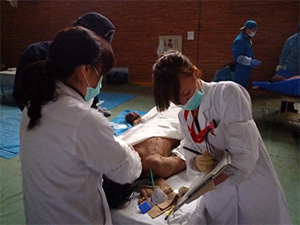Forensic Odontology
Within dentistry, forensic odontology is regarded as a social discipline of applied dentistry. This is very similar to the way legal medicine is regarded within the field of medicine; however, forensic odontology mainly involves the use of dental knowledge to resolve legal problems and to confirm the identity of unidentified remains.
Human identification involves finding out who a person is or was from their living body or corpse, or part of a corpse. In forensic odontology, an individual may be distinguished from others by the shapes of teeth and bones and by signs of previous dental treatment, or their age and sex can be estimated based on their tooth composition. The identification of unidentified individuals is important not only for police investigations, but also when dealing with the aftermath of a major disaster. In the event of an unnatural or criminal death, the investigation cannot get underway until the identity of the corpse is known, and in natural disasters with a large death toll, such as the Great East Japan Earthquake, it is also vital to confirm the victims' identity to assess the number of deaths and the identification rate. There is also the legal issue that when a person dies, a notice of death must be submitted and their name deleted from the family register. The most important reason for the human identification, however, is to protect the dignity of the deceased. No one should ever die unknown. Establishing who an individual is helps to protect that person's rights as a human being. We therefore compare dental treatment records with the dental characteristics of human remains in the search for clear, definitive proof of identity.
Teeth are the hardest tissue in the human body, and as such persist long-term, even in decomposed, burned, or skeletal remains, making them useful for human identification.
The services provided by forensic odontologists mainly consist of performing dental examinations for human identification, as described above, and producing certificates. We are also engaged in researching tests for use in reliable human identification in the future, and are training dentists to add to the small number of existing forensic odontologists, as well as providing university courses in the subject.



